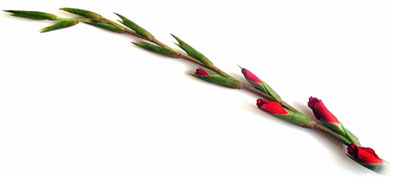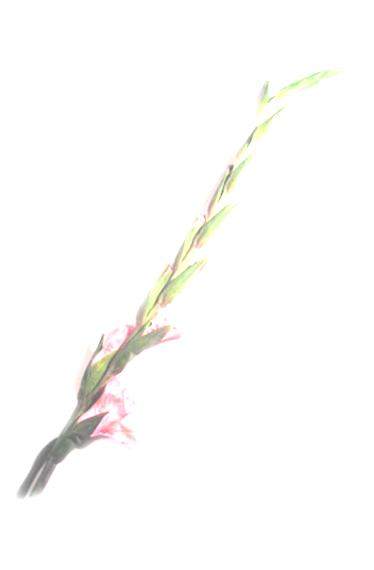
A Fillup for Phil Philby Films
the Revivalist . autumn

The Gold Goanna

[A taped voice is heard on loudspeakers.]
Ladies and gentlemen. This is Bill Collins speaking.
This is a very proud moment for the Australian Film Industry. It is also a very, very proud moment for me.
Our motion picture industry is now world-famous, and the names of Beresford, Weir, Scepisi and their colleagues are going down in cinema history along with our superlative actors and actresses.
Every film which leaves Australia seems destined for some form of acclamation in some corner of the globe, doesn't it? But tonight all Australia waits with bated breath to know who wins our most coveted film award of the year. The Gold Goanna.
I'm not going to keep you all in suspense any longer. I know for a fact that the judges' panel found this the toughest decision they'd ever had to make. Not all that many directors in the short history of cinema write their own screenplays.
So tonight's Goanna winner is a pretty special type of person, you might stay something of genius.
And here is the panel's decision in this envelope I'm opening now [rustle of paper] . . . And I won't keep you in suspense any longer.
For the Best Original Screenplay of 1981 -
The Best Original Music Score -
The Best Art Direction -
And the BEST DIRECTOR IN AUSTRALIA ...and it couldn't happen to a nicer more unassuming person. I'm proud to ask him to step up onto the stage now to accept his Goanna personally, and I don't want to keep you in suspense any longer.
Ladies and Gentlemen put your hands together please for the man behind Phil Philby Films and the winner of this year's coveted Gold Goanna for outstanding excellence in the Australian Cinema -
The director of "Cage of Darkness" - MR PHIL PHILBY!
[The curtain parts, and Phil Philby enters, a diminutive, almost levantine figure, cringing with self-effacement and brandishing his huge gold goanna award. Although he drives a Jaguar car and owns several houses, he is dressed "down" in a mode of ostentatious penury. His life is that of the new breed of Australian arts mendicant and his time is mostly spent at Canberra seminars and "workshops" lobbying for grants. Phil reaches up to the tall microphone and huskily speaks:]
I dunno what to say. But . . . you're beautiful. I thank you.
All of you. I'm knocked out. It's just amazing.
A lot of people have asked me how I came to make a two and a half hour feature documentary film on the subject of discrimination against lesbianism in an aboriginal women's prison.
The answer is a simple one: the New South Wales Film Corporation and the Australian Film Commission gave me one-point-two million dollars to make it.
The result is "CAGE OF DARKNESS".
I guess it all began about the time Gough Whitlam was sacked by Sir John Kerr and Fraser turned out the lights.
I got a miserable fifteen thousand dollar grant from the Australia Council to go to a Greek island for two years to research my novel.
At that particular stage in my creative development I was heavily into exposing the persecution of left-wing Greek gays in a Wollongong psychiatric hospital.
When Fraser turned out the lights a lot of creative Australian intellectuals like myself felt we had to leave the stifling cultural and political atmosphere here to work freely overseas, but after about a year on the Greek island of Mykonos I got pretty disillusioned - pretty disillusioned after a couple of incidents of harassment by the American-based multi-national tourism agencies who were screwing up the ecology of the nude beaches, so I moved to the island of Lesbos, where my novel took on an entirely new twist. Like, I started to see it in terms of a societally oriented scenario with a more relevant set of infrastructures and parameters. I started to see my novel more in terms of a late Hitchcock film, so I back to Australia - collect - applying to the AFDC for a preliminary script development grant.
Luckily Mike Buckle was still Special Projects Funding Officer at the AFDC. We'd known each other since the old Bert Brecht Puppet Workshop days at Cronulla before Fraser turned out the lights.
Unfortunately, I couldn't raise more than forty-five thousand to write the first draft of my synopsis, because Mike had just voted himself a hundred and fifty grand to research a political thriller about Sir John Kerr's role in blocking Cuban aid to the El Salvador freedom fighters to be shot on location at Allambie Heights and Deep Creek.
The rest is history. Its amazing. I'm knocked out. You're beautiful etc.
When I showed CAGE in East Berlin a few weeks they were just amazed and knocked out. They just couldn't believe that I could have shot such an overtly political film in a Fascist state like Australia under the very noses of Fraser, Thatcher and Reagan.
I mean, when they saw that famous scene where two nude quarter-caste cons (stunningly played by Chantal Contouri and Candy Raymond) make explicit love to each other through the bars of their adjoining cells with Jacki Weaver, the wardress, watching through binoculars they just couldn't believe it was possible after Fraser had turned out the lights.
Back in Australia, most of the people who have seen CAGE are amazed and knocked out by the amazing metaphor my movie generated in terms of film. I guess I mean the only reason I managed to swing over a million bucks of government money to make it was because the Fascist bosses who run Australia were ironically blind to my subversive political subtext.
They just saw CAGE as another prison movie with an all-girl cast.
Take the scene where the prison Governor (stunningly played by Kate Fitzpatrick) tortures the aboriginal girl car-wash attendant with a hair dryer and a pop-up toaster.
In that scene I've used the totally innovative technique of intercutting real newsreel footage of the bombing of Hiroshima, Nagasaki, Dresden, North Vietnam, Hitler's speeches, and the sacking of Gough Whitlam by Sir John Kerr before Fraser turned out the lights.
Last week I was in Zagreb in Jugoslavia representing Australia at the international film-makers seminar in Jugoslavia.
I had managed to smuggle out of Australia some horrifying statistics on our prison system here, and people in Zagreb were sickened to learn that Australian jails are currently holding over a quarter of a million men and women against their will.
Their only crime was that they broke the law.
It's this kind of American culture imperialism I try to expose in the final sequence of CAGE and I only managed to shoot it after the cast had been improvising for over a year in a disused Chatswood brick kiln dressed up as funnel-web spiders. That way they were able to experience night and day what it's like to be an oppressed ethnic minority under the jackboot heel of Australian Fascism.
Now that my film is compulsory viewing in all secondary schools throughout Australia, I guess everyone knows the final scene by heart. You know the scene where Jill Perryman is pack-raped by Gwen Plumb, Judy Morris, Judy Davis, Wendy Hughes, June Salter, June Bronhill, Julie Anthony, Jeannie Little, Denise Drysdale and Ernie Sigley in a stunning cameo as the alcoholic parole officer. Watched by the sadistic and crypto-gay prison gynaecologist (Fred Astaire) who wants to turn the prison into an American missile base.
I don't want to say any more than that or I'll spoil the story. I just want to say that you can't say all there is to be said about discrimination against lesbianism in an aboriginal women's prison situation in a two and a half hours feature documentary situation. Right? That's why CAGE is a trilogy. It's an eight-part trilogy.
I guess that's why the ABC is so interested. Nothing's too long for those guys.
I only hope Stigwood and Murdoch and Phil Adams will cough up big private sector tax bickies so I can make CAGE TWO, and THREE, and FOUR, and FIVE, and SIX, and SEVEN, and EIGHT, before Fraser turns out the [the stage blacks out].Aw, shit!
Barry Humphries
Quadrant, 1981